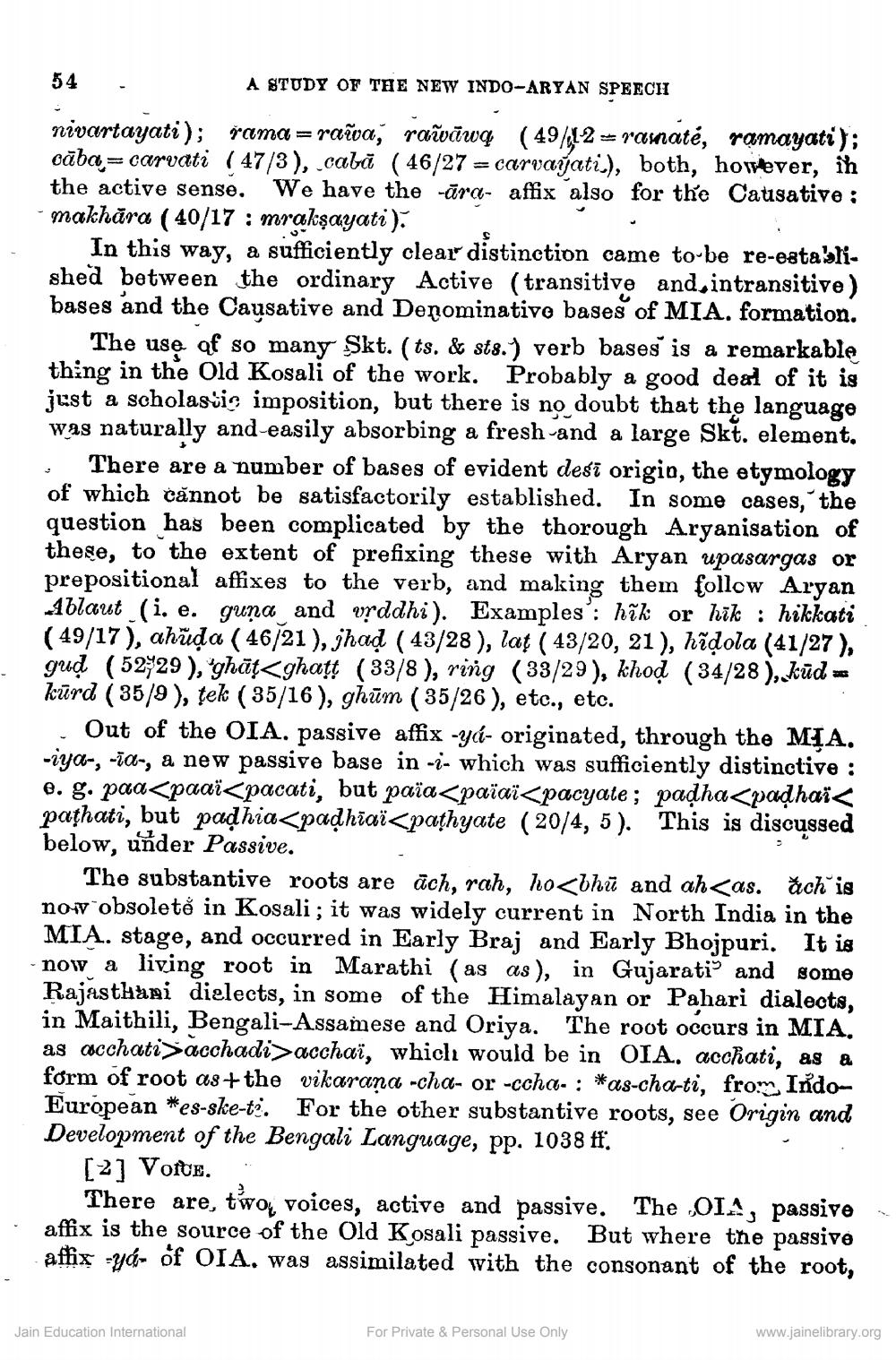________________
A STUDY OF THE NEW INDO-ARYAN SPEECH
nivartayati); řama=rawa, rawāwą (49/12 = rasnatė, ramayati); cāba;=carvati ( 47/3), cabă ( 46/27 = carvayati), both, however, in the active sense. We have the āra- affix also for the Causative : makhăra (40/17 : mrakşayati).
In this way, a sufficiently clear distinction came to-be re-established between the ordinary Active (transitive and intransitive) bases and the Causative and Denominative bases of MIA. formation.
The use qf so many Skt. (ts. & sts.) verb bases is a remarkable thing in the Old Kosali of the work. Probably a good deal of it is just a scholasuig imposition, but there is no doubt that the language was naturally and easily absorbing a fresh and a large Skt. element.
There are a number of bases of evident desī origin, the etymology of which cannot be satisfactorily established. In some cases, the question has been complicated by the thorough Aryanisation of these, to the extent of prefixing these with Aryan upasargas or prepositional affixes to the verb, and making them follow Aryan Ablaut (i. e. guna and urddhi). Examples': hãk or hik : hikkati ( 49/17), ahūļa ( 46/21), jhad ( 43/28), lat ( 43/20, 21), hãdola (41/27), gud (52929), ghāt<ghať (33/8), ring (33/29), khoď (34/28), kūdkūrd ( 35/9), tek ( 35/16), ghūm (35/26 ), etc., etc.
Out of the OIA. passive affix -yá- originated, through the MIA. -iya-, -ia-, a new passive base in -;- which was sufficiently distinctive : e. g. paa<paaž<pacati, but païa<païaï<pacyate; padha<padhai< pathati, but padhia<padhĩaï<pathyate (20/4, 5). This is discussed below, under Passive.
The substantive roots are âch, rah, ho<bhū and ah<as. ăch is now obsoleté in Kosali; it was widely current in North India in the MIA. stage, and occurred in Early Braj and Early Bhojpuri. It is - now a living root in Marathi (as as ), in Gujaratio and some Rajasthani dielects, in some of the Himalayan or Pahari dialects, in Maithili, Bengali-Assamese and Oriva. The root occurs in MIA. as acchati>acchadiacchaï, which would be in OIA, acchati. as a form of root as+the vikarana -cha- or -ccha- : *as-cha-ti, from Indon European *es-ske-t?. For the other substantive roots, see Origin and Development of the Bengali Language, pp. 1038 ff.
[2] VOICE..
There are, two, voices, active and passive. The OIA, passive . affix is the source of the Old K osali passive. But where the passive
affix -yd- of OIA. was assimilated with the consonant of the root,
Jain Education International
For Private & Personal Use Only
www.jainelibrary.org




